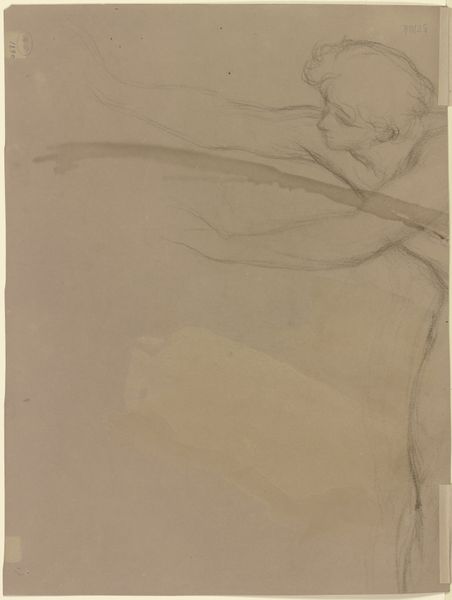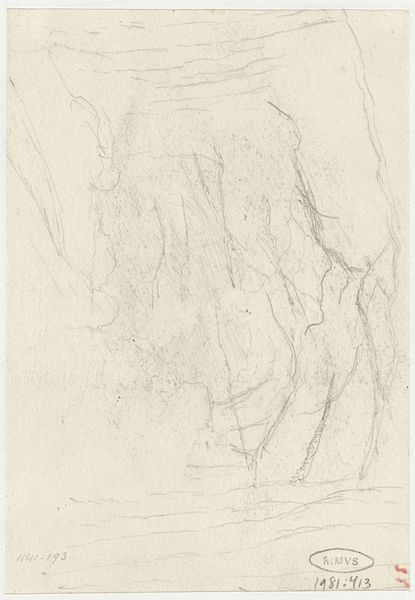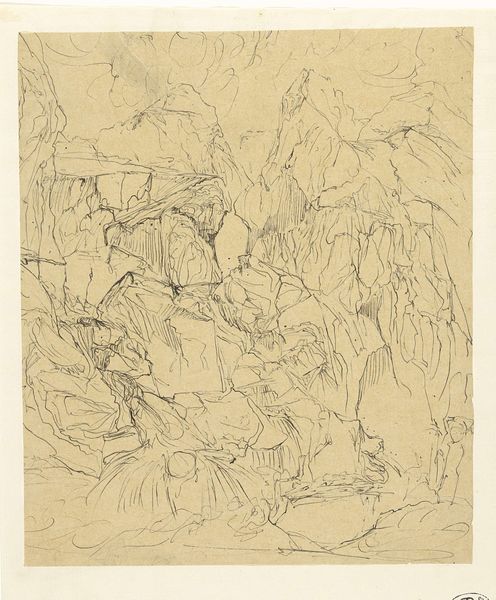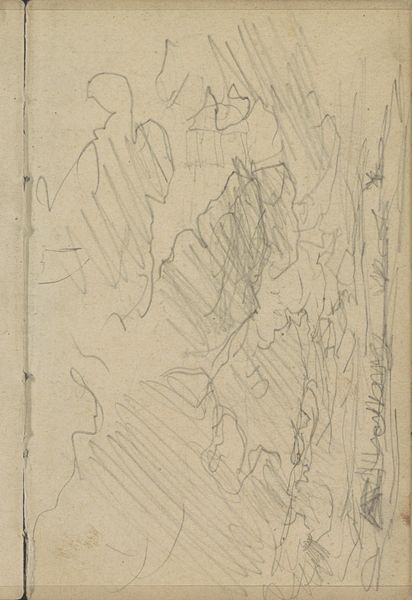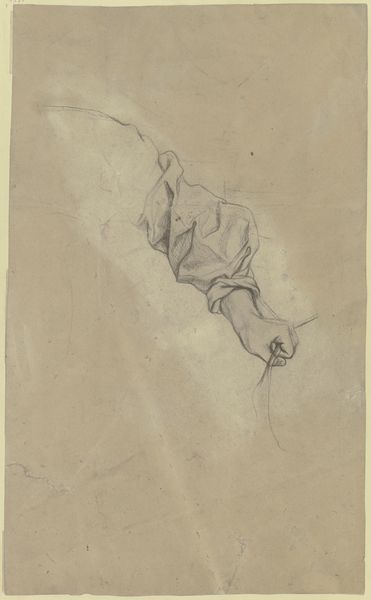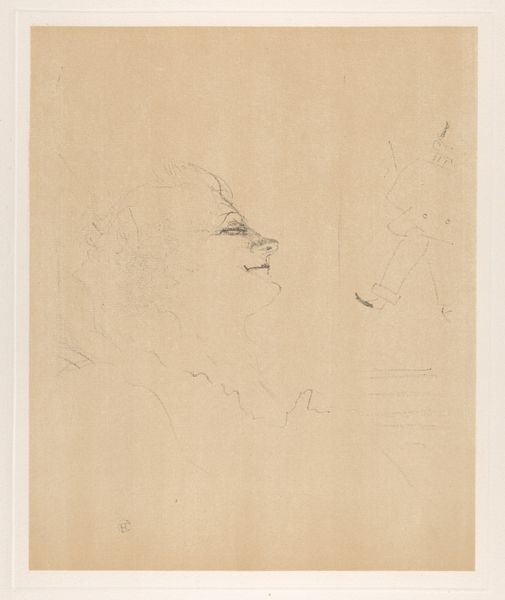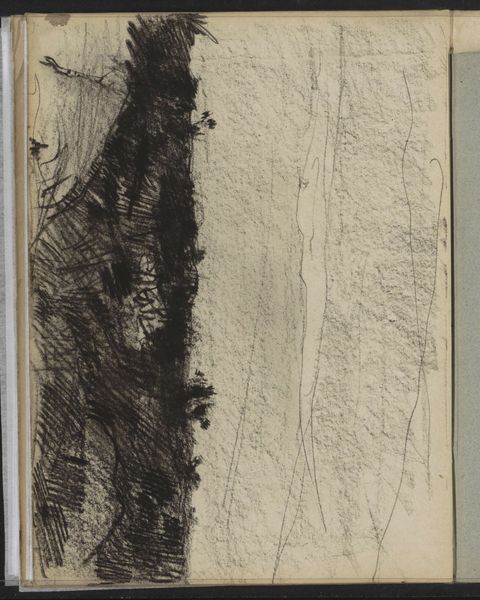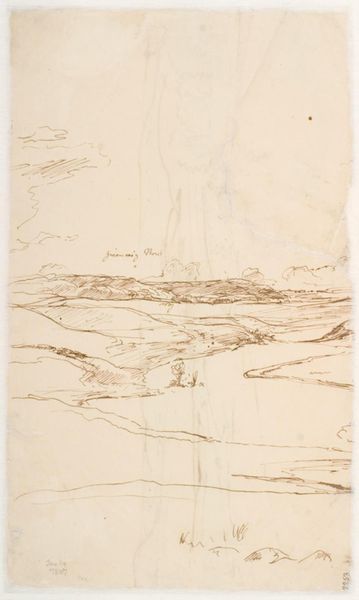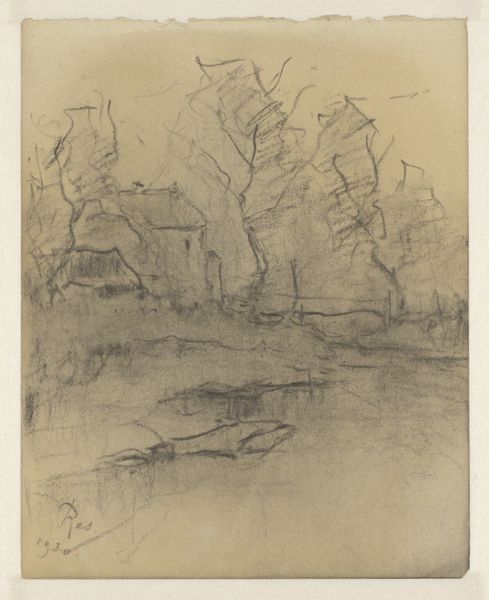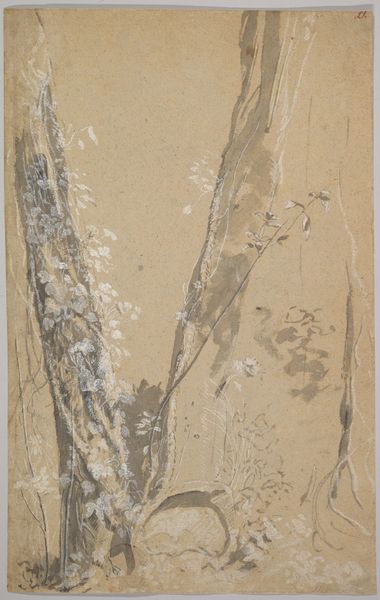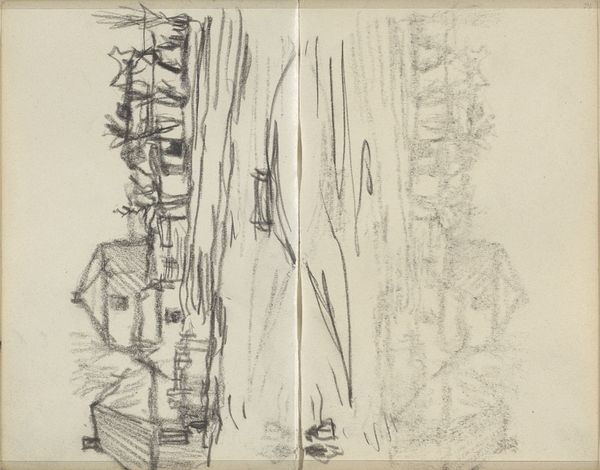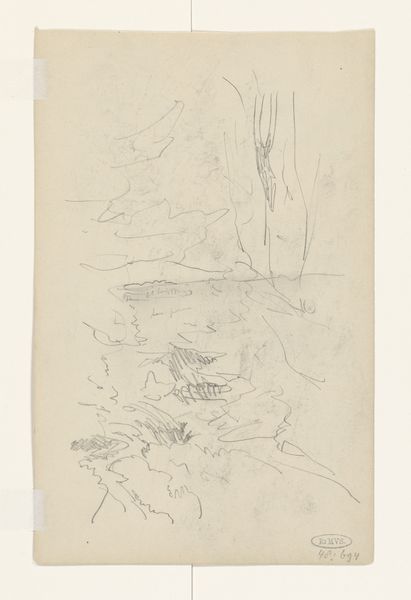
drawing, dry-media, pencil, chalk, graphite
#
drawing
#
landscape
#
dry-media
#
pencil
#
chalk
#
graphite
#
watercolor
Copyright: Public Domain
Editor: We’re looking at "Baumumstandener See in einem Gebirge" by Victor Müller, created with graphite, chalk, and pencil on paper. It has a ghostly, unfinished quality. What jumps out at you about this drawing? Curator: The very rawness of the materials strikes me. Look at the laid bare process; Müller’s use of graphite, chalk, and pencil is not about illusion but about revelation. We're witnessing labor. Was the availability of paper significant here? Who produced this paper and what social relations were inherent in that production? Editor: That's fascinating. I hadn't considered the material history of the paper itself. So, instead of just seeing a landscape, you're seeing… the means of production, almost? Curator: Precisely. Consider the hierarchy traditionally placed on painting versus drawing, “finished” versus “sketch”. This work resists that hierarchy by emphasizing its own making. We see the artist's hand, the building up of the image, the revisions, all made visible through the very specific materials he employs. How do these specific materials, as opposed to others he could have used, impact its status? Editor: It feels more immediate and personal somehow, less polished, more like a direct connection to the artist’s thought process. So you are less focused on "what" it depicts than on "how" it was made? Curator: Indeed. The “what” becomes secondary to the “how,” prompting us to ask questions about the social conditions that allowed for this specific combination of materials and techniques. The availability of materials would have affected accessibility for the artist. This isn't just a landscape; it's a material document of its time. Editor: I never thought I'd be considering the social impact of a pencil drawing of mountains. That perspective has changed how I’ll look at other drawings in the museum. Curator: And hopefully prompted considerations of all works.
Comments
No comments
Be the first to comment and join the conversation on the ultimate creative platform.

